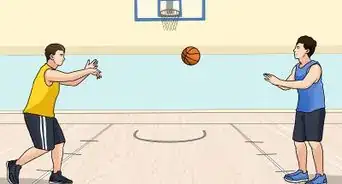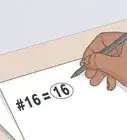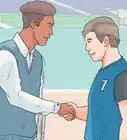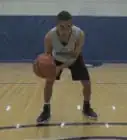This article was co-authored by Ryan Tremblay. Ryan Tremblay is a Basketball Coach and the Owner of National Sports ID and STACK Basketball. With over 30 years of experience, Ryan specializes in basketball coaching, social media marketing, and website design. Ryan created the National Sports ID as a platform to verify the age/grade of youth athletes and STACK Basketball to inspire young athletes to grow into mature individuals and basketball players. Ryan was a First Team All-Decade basketball player in Bergen County and finished in the top 20 all-time leading scorers in the county’s history with 1,730 points. He went on to Caldwell University on a basketball scholarship where he was part of three championship teams. Ryan was a two-time All-Metropolitan, All-State, and All-Conference point guard and the all-time three-point leader in the school’s history, landing him in the Caldwell University Athletic Hall of Fame.
There are 12 references cited in this article, which can be found at the bottom of the page.
wikiHow marks an article as reader-approved once it receives enough positive feedback. In this case, 100% of readers who voted found the article helpful, earning it our reader-approved status.
This article has been viewed 73,963 times.
Small forwards are one of the five positions played in regulation basketball and are frequently called a jack of all trades. They're typically quicker, shorter, and leaner than centers and power forwards, but larger and taller than guard positions. If you're just starting as a small forward, to key to success is versatility, which can be achieved by practicing shots, improving perimeter defense, and getting yourself into shape.
Steps
Practicing Your Shooting
-
1Shoot the ball against the wall or backboard with 1 hand. Hold the ball about 2 feet (0.61 m) in front of you with about 1 inch (2.5 cm) between each of your fingers and 2 inches (5.1 cm) between your thumb and index finger. Turn the ball around as you lift it to eye level with your elbow under the ball level to your shoulder. Afterwards, bend your arm at the elbow slightly and raise it up into the air to throw the ball.[1]
- Keep the ball on your fingertips, not your palm.
- Never shoot the ball with your thumb.
-
2Keep your guide hand on the ball as you shoot. Some players keep their guide hand beside the ball but fail to put it on the ball. Maintain the hand on the ball as you shoot and release it only as the ball rolls off your fingers and is thrown into the air.[2]
- Remember that the guide hand is not for shooting the ball and you should never apply pressure with it as you shoot.
Advertisement -
3Shoot from your feet up and push the energy through your legs. Start with a slight bend in your knees, your buttocks pushed backward, and one hand on each side of the ball. Once you are comfortable, bend your knees further and straighten your back. As you jump to throw the ball, push yourself up using your toes and jump about 1 foot (12 in) off the ground.[3]
- Focus on moving the energy from the ground through your legs and into your shooting arm.
- Keep your back straight and jump a bit forward, but never lean forward during the shot.
-
4Keep your legs shoulder-width apart to create a solid foundation. With proper leg stance, you can ensure that your shot is steady and balanced. If you find yourself off balance, you will need to focus on using your shooting hand to re-adjust.[4]
- Always keep your dominant foot about 0.5 feet (6.0 in) in front of your non-dominant foot.
- Although you move slightly forward from your starting position when you shoot, your legs should always be the same width apart.
-
5Follow-through with your hand during the shot. When making your shot, make sure to extend your shooting hand all the way until there is no bend in your elbow. This directs the ball into the basket.[5]
- Even if you're off balance on your feet, keep following through with your hand to compensate for off-balance legs.
Improving Perimeter Defense
-
1Keep your shoulders lower than the person you're blocking. By maintaining a lower shoulder stance than your opponent, even as they drive toward the net, you increase your chances of getting to your destination before the offense.[6]
- Keep your back arched, but make sure it's not totally straight.
- Reach your arm down to the ground. With proper positioning, you should be able to touch it with your fingers.
-
2Maintain arm's length from offense. When you're too close, the offensive player will be able to push their way by you. But if you're farther than arm's length, they have enough room to shoot. If you're not sure that you're an appropriate distance from the offense, reach your arm out and use it as a guide.[7]
- If your coach tells you to keep a certain distance from your opponent, follow this instruction. Different defensive strategies mean that you're not always going to play small forward defense the same way.
-
3Keep your deflection hand up high and your ball hand low. Your deflection hand should be raised so it is almost touching your shoulder, ready to shoot upward and block the shot. Your ball hand should be at waist level so you can easily poke the pall and try to take it from the player.[8]
- Even before the offense shoots, maintain your deflection hand at shoulder level to let your opponent know that you are ready to block their shot an any moment.
- Keep your hands loose but never let them fall to your sides.
-
4Swipe upward when you attempt to steal the ball. Swiping down on the ball looks more aggressive, meaning you're more likely to be called for a foul. Swipe upward to minimize the chances of this happening.[9]
- Don't hesitate to swipe down if it's your only option, but always be aware of the risks.
-
5Keep your back straight and crouch down on the balls of your feet. Pretend that you're sitting on a stool, with your knees bent and your feet pointing forward, and your hands in front of you. Lift your heels about 1 inch (2.5 cm) off the ground.[10]
- Keep your weight on the balls of your feet. If put your weight on your toes, you will throw yourself off balance.
-
6Slide left and right by reaching your foot out at an angle. While maintaining the basic defensive position, turn your foot to the left or right and extend your leg outward to move to the side. The toe of your back foot should line up with the heel of your front foot (the one that is at an angle) as you slide.[11]
- Always slide at an angle to the offensive player to prevent them from dribbling down the middle of the court.
- Use the slide to push the offense toward the sideline or toward your defensive players.
Exercising Your Muscles
-
1Straddle the ball with your hands outside the width of your shoulders. Your hands should be about 1 foot (0.30 m) from your shoulders. Tighten your core, flex at your elbows, and lower your chest to the basketball. Once you hit the ball, reverse the motion and push yourself up by extending your arms as quickly as possible to throw yourself. Catch yourself on the basketball with your hands and count to 1 before lowering yourself to the ground.[12]
- If you're having trouble getting off the ground, just do standard push-ups until you're comfortable.
-
2Practice medicine ball wall throws to improve hand-eye coordination. Stand in front of a wall with your feet shoulder-width apart and clutch the ball at chest height. Hold the ball with one hand on either side and bring it behind your head in an arc. Reverse the arc and let go once it's in front the target to throw the ball against the wall at a predetermined location. Catch the ball when it bounces back.[13]
- Stand about 5 feet (1.5 m) from the wall.
- Keep your hands in front of you after shooting to prepare for the impact of the ball.
-
3Conduct medicine ball squat throws to practice shifting leg energy. Hold the ball with both hands on either side at about neck height. Crouch down by bending your knees and lowering your buttocks to the ground until your elbows are about to touch your knees. Stand up and throw the ball upward. Keep your hands up in the air until you catch the ball.[14]
- You can also throw the ball upward with as much force as you can and let it fall to the ground.
Community Q&A
-
QuestionCan I play small forward if I am shorter than 5' 6"?
 Jonathon NelsonCommunity AnswerYes, you can play small forward (SF) if you're shorter than 5' 6. However, just make sure that you can play just as well as a taller SF. This includes rebounding, shooting, passing, etc. Being shorter does nothing different. You just have to play harder. Taller players like to "prey" on shorter players, but by showing that you can be a "big dawg" you can prove that they can't do anything to you...
Jonathon NelsonCommunity AnswerYes, you can play small forward (SF) if you're shorter than 5' 6. However, just make sure that you can play just as well as a taller SF. This includes rebounding, shooting, passing, etc. Being shorter does nothing different. You just have to play harder. Taller players like to "prey" on shorter players, but by showing that you can be a "big dawg" you can prove that they can't do anything to you... -
QuestionHow should I train as a 10-year-old?
 Jonathon NelsonCommunity AnswerThere is no specific training for age 10. It just depends on what you are capable of doing. Only you know what you can do and at what intensity. Practice drills your coach gives you at home and play as often as you can to improve.
Jonathon NelsonCommunity AnswerThere is no specific training for age 10. It just depends on what you are capable of doing. Only you know what you can do and at what intensity. Practice drills your coach gives you at home and play as often as you can to improve. -
QuestionDo I have to be tall to play small forward, even if I am a very good shooter and dunker?
 Jonathon NelsonCommunity AnswerNo. You don't have to be super tall. You don't have to be 7'6" Yao Ming, and you don't have to be 6'2" Chris Paul. The normal small forward height is 6'6"-6'9". But there is no designated position. Being a good shooter and dunker may not even be a small forward position.. You could possibly play a shooting guard position if you're not comfortable with your height.
Jonathon NelsonCommunity AnswerNo. You don't have to be super tall. You don't have to be 7'6" Yao Ming, and you don't have to be 6'2" Chris Paul. The normal small forward height is 6'6"-6'9". But there is no designated position. Being a good shooter and dunker may not even be a small forward position.. You could possibly play a shooting guard position if you're not comfortable with your height.
Warnings
- Do not push yourself too hard when you work out. You don't want to pull a muscle, and you certainly don't want to tear one either.⧼thumbs_response⧽
References
- ↑ https://www.usab.com/basketball/media/videos/2014/03/usa-basketball-shooting-drills.aspx
- ↑ https://www.usab.com/basketball/media/videos/2014/03/usa-basketball-shooting-drills.aspx
- ↑ https://www.usab.com/basketball/media/videos/2014/03/usa-basketball-shooting-drills.aspx
- ↑ https://www.usab.com/basketball/media/videos/2014/03/usa-basketball-shooting-drills.aspx
- ↑ https://www.usab.com/basketball/media/videos/2014/03/usa-basketball-shooting-drills.aspx
- ↑ http://www.stack.com/a/basketball-defensive-stance
- ↑ http://www.stack.com/a/basketball-defensive-stance
- ↑ https://pgcbasketball.com/blog/hand-position-defense/
- ↑ https://www.usab.com/youth/news/2010/12/6tips-for-better-perimeter-defense.aspx
- ↑ https://www.usab.com/basketball/media/videos/2014/12/mass-defense-part-1.aspx
- ↑ https://www.usab.com/basketball/media/videos/2014/12/mass-defense-part-1.aspx
- ↑ https://youtu.be/arU9JsWaTV0?t=53s
- ↑ https://workoutlabs.com/exercise-guide/medicine-ball-wall-throw/
- ↑ https://youtu.be/4C0z1_uNHU0?t=7s
- ↑ Ryan Tremblay. Basketball Coach. Expert Interview. 13 November 2020.



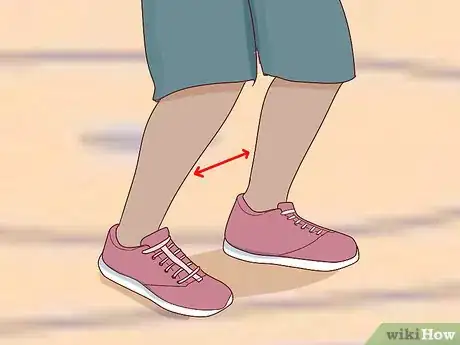



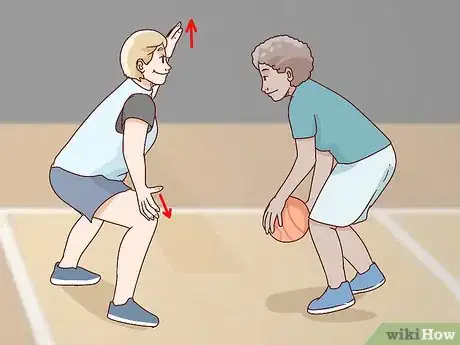





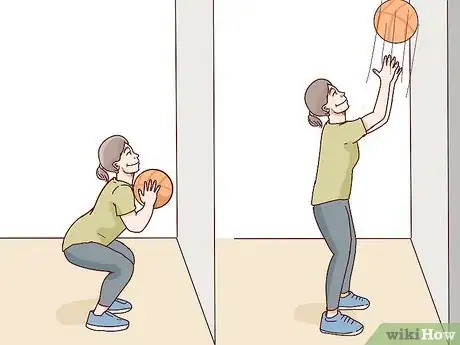
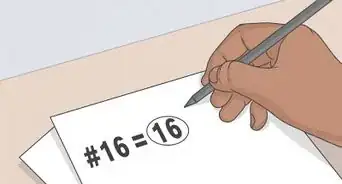
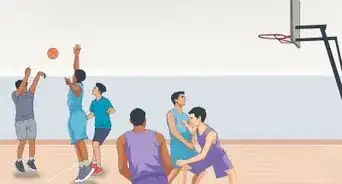
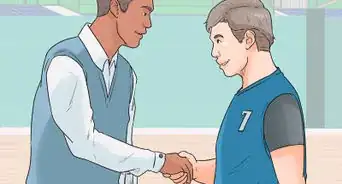
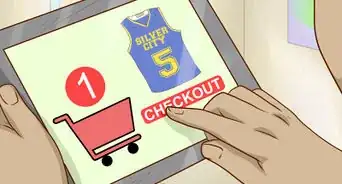
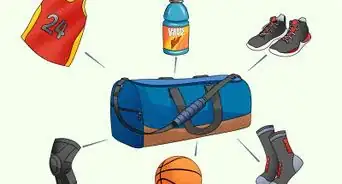
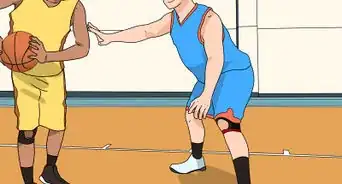
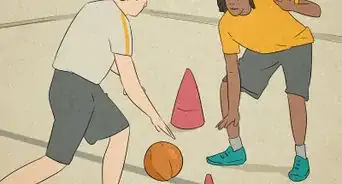
-Step-12.webp)
